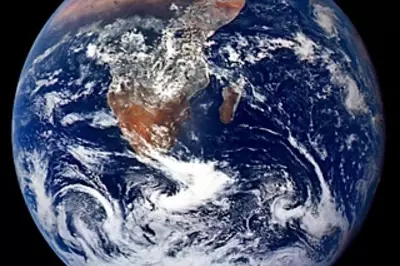What Is Global Environmental Health?

 The Earth is a naturally sustainable system—through photosynthesis, the sun provides energy to plants, which in turn produce oxygen for animals to live. Even our bodies decompose and are once again used by the earth. This natural cycle does not produce unnecessary waste; every part of the system is interconnected and used to facilitate life.
The Earth is a naturally sustainable system—through photosynthesis, the sun provides energy to plants, which in turn produce oxygen for animals to live. Even our bodies decompose and are once again used by the earth. This natural cycle does not produce unnecessary waste; every part of the system is interconnected and used to facilitate life.
But humans disturb this balance by producing toxic waste that harms the Earth, burning fossil fuels, and overconsuming natural resources. The effects of our actions in a highly industrialized society are alarming and undeniable: we are creating conditions that will eventually not be able to support and sustain life on this planet.
The World Wildlife Fund likens the environment to a bank account: “Just as it is possible to withdraw money from a bank account faster than to wait for the interest this money generates, renewable resources can be harvested faster than they can be re-grown. But just like overdrawing from a bank account, eventually the resource will be depleted.”
To put it into perspective, across the globe, we are currently using the resources of 1.5 planets.
A sustainable ideal
 Sustainability is a term that entered common use about 50 years ago to describe a way of living that works to conserve energy and resources in order to remain in line with the planet’s natural balance.
Sustainability is a term that entered common use about 50 years ago to describe a way of living that works to conserve energy and resources in order to remain in line with the planet’s natural balance.
The most accepted and cited definition is from a 1987 UN report, which described sustainability as “development that meets the needs of the present without compromising the ability of future generations to meet their own needs.” In order to create long-lasting global environmental health, we need to develop a forward-looking, sustainable way of interacting with the planet and one another.
Four principles
The Natural Step Program, a national not-for-profit organization dedicated to sustainable development, has further defined the UN’s definition into four principles. In order to develop a sustainable world, we must…
- Limit what we take from the earth, including heavy metals and fossil fuels.
- Limit the toxic substances we make. Hazardous chemicals, plastics, and pesticides are examples of man-made substances that have negative consequences on the planet.
- Respect and protect the earth. Let natural processes unfold—avoid paving over wildlife habitats, cutting down forests, and polluting water supplies.
- Meet human needs. Ensure that workers are paid equitably, treated fairly, and provided safe working conditions.
Not just about nature
Note that sustainability and global environmental health is not just about what is “green”—there is a human component as well. Though humans contribute to the degradation of the planet, we are also a very natural part of the cycle and should be protected and respected as such.
Did you know?
More than 1 billion people across the globe lack access to clean water.
Source: World Wildlife Federation.
Gips, T. (2009). Sustainability. Online module, Center for Spirituality and Healing, Whole Systems Healing. Accessed at http://www.csh.umn.edu/wsh/Sustainability.
United Nations. (1987). Our common future. Report of the World Commission on Environment and Development. Retrieved from http://conspect.nl/pdf/Our_Common_Future-Brundtland_Report_1987.pdf.

